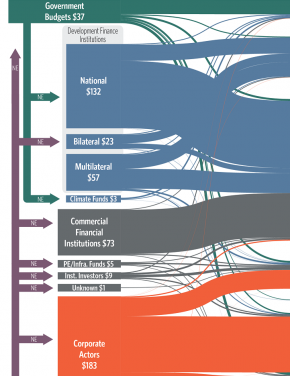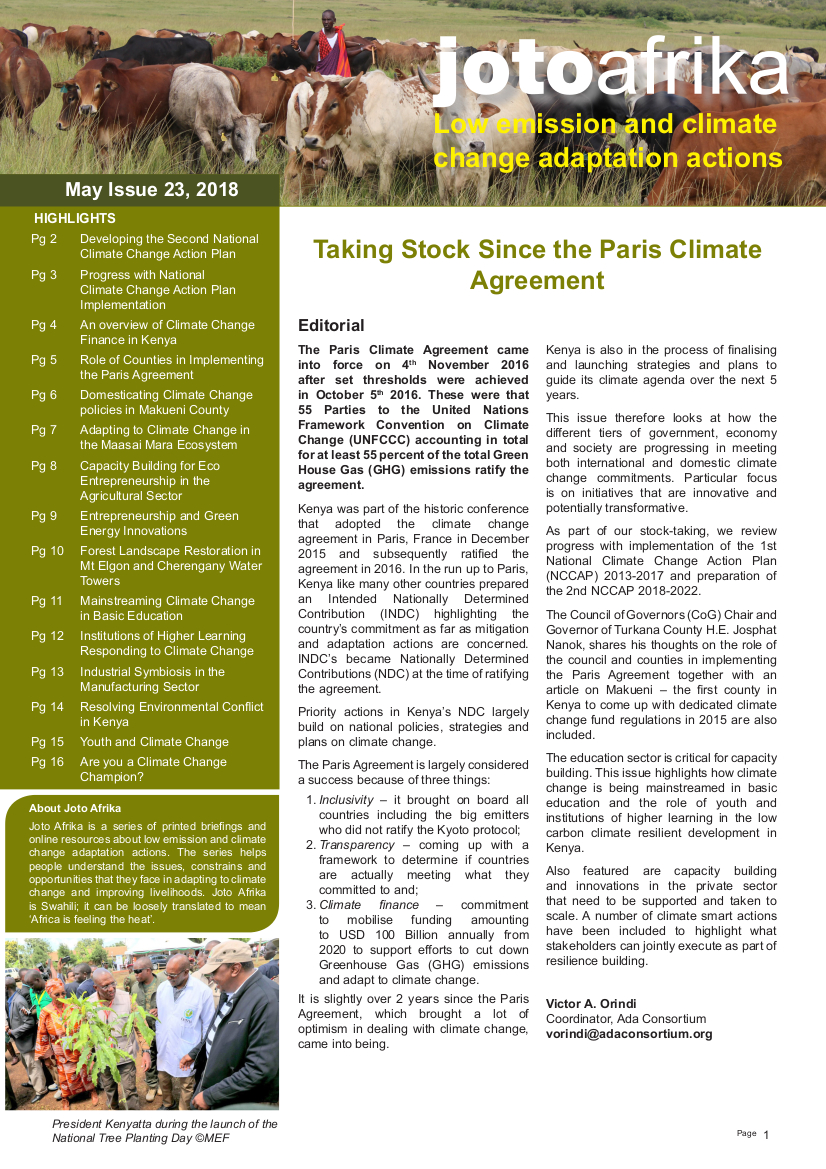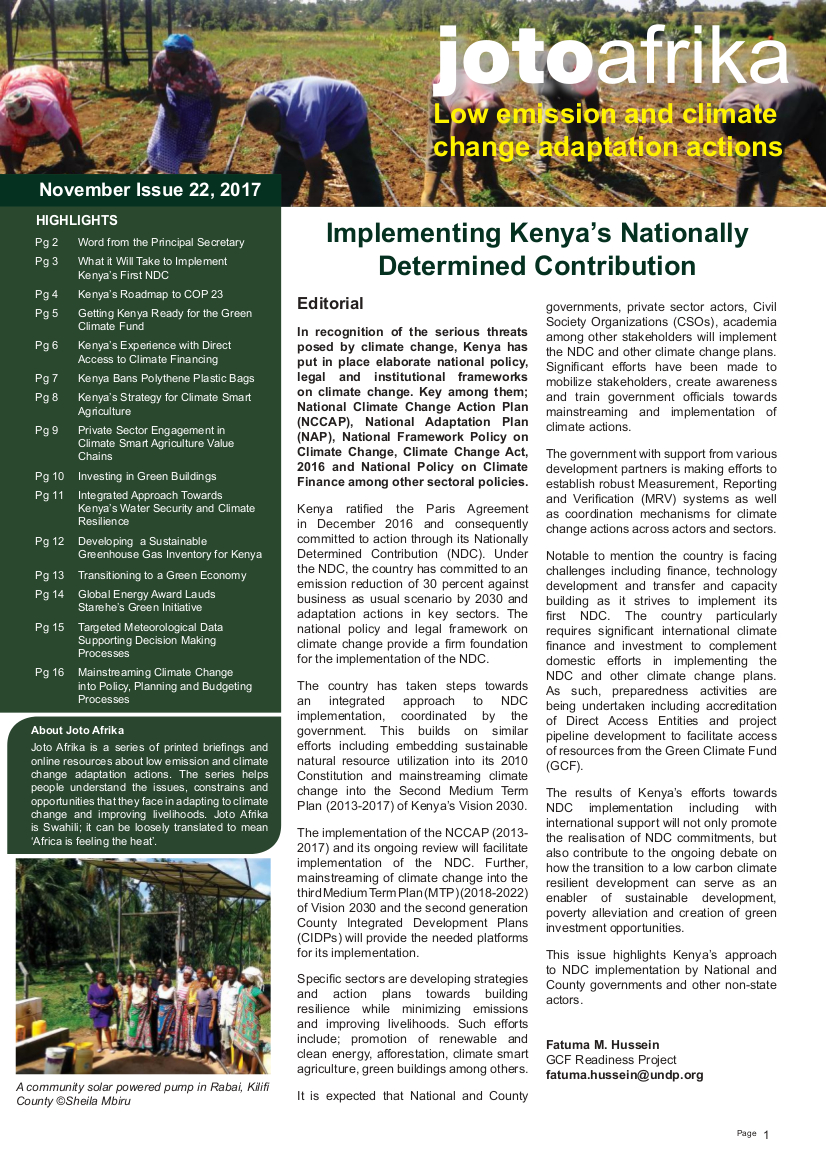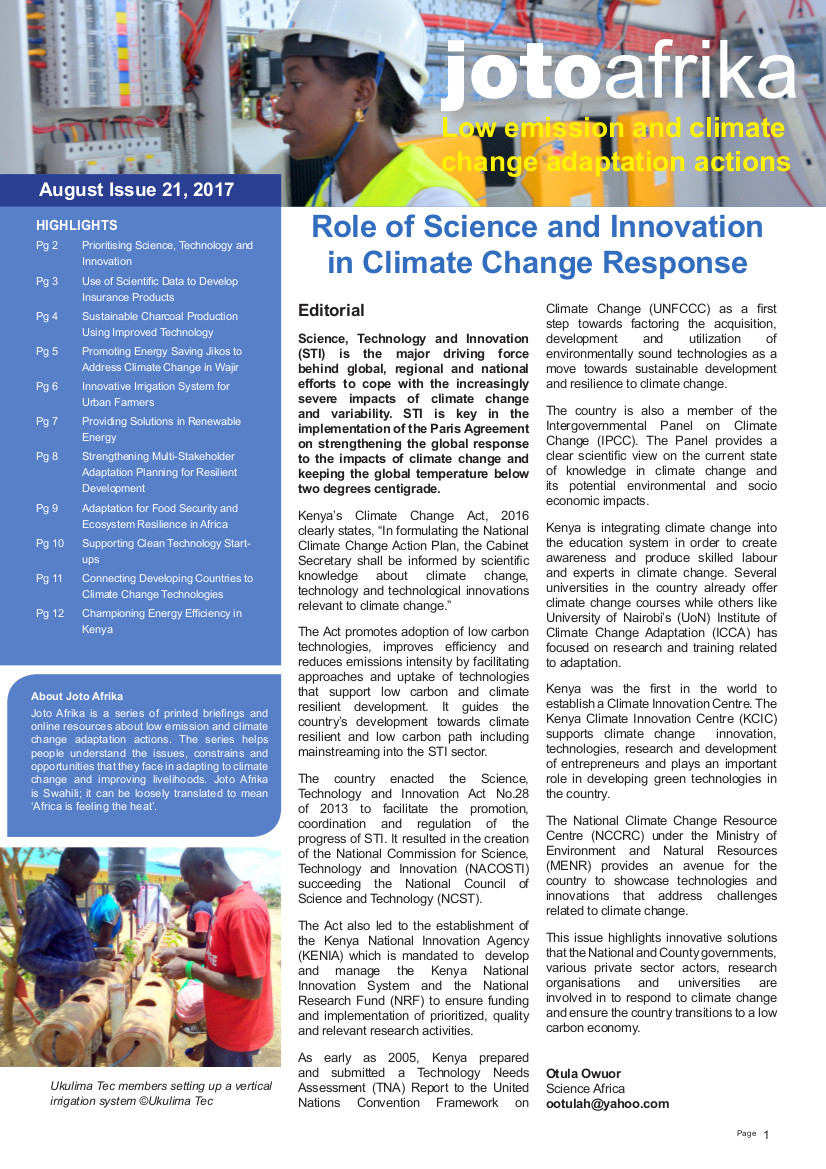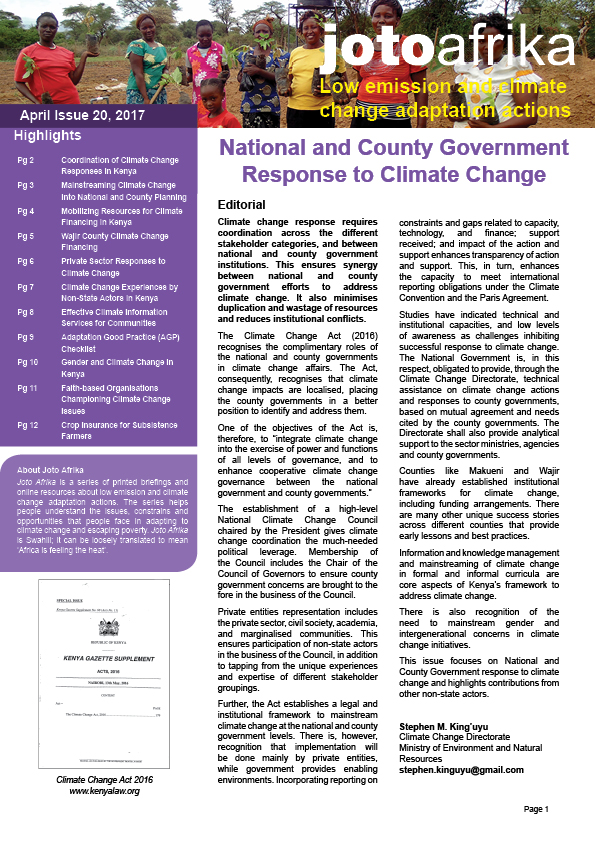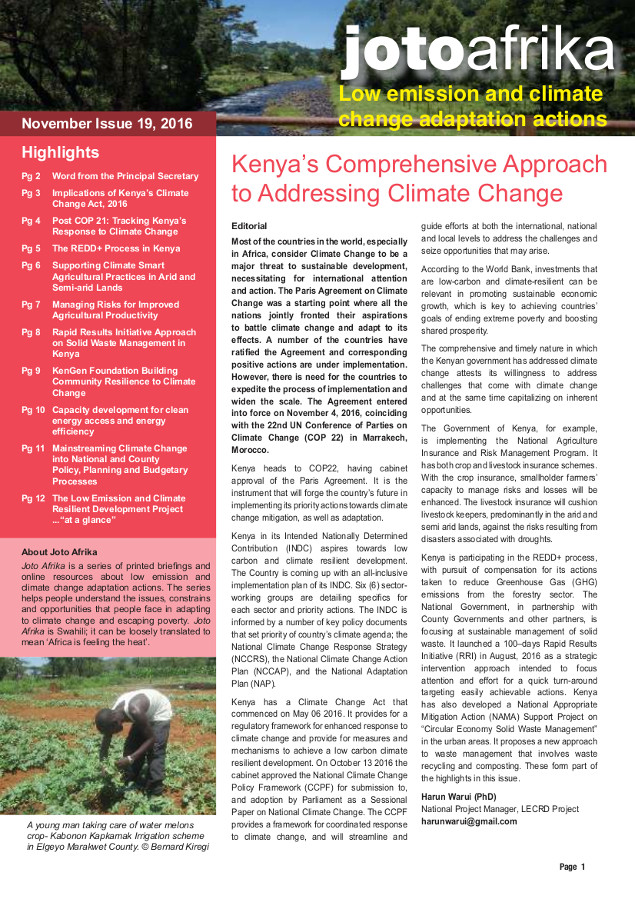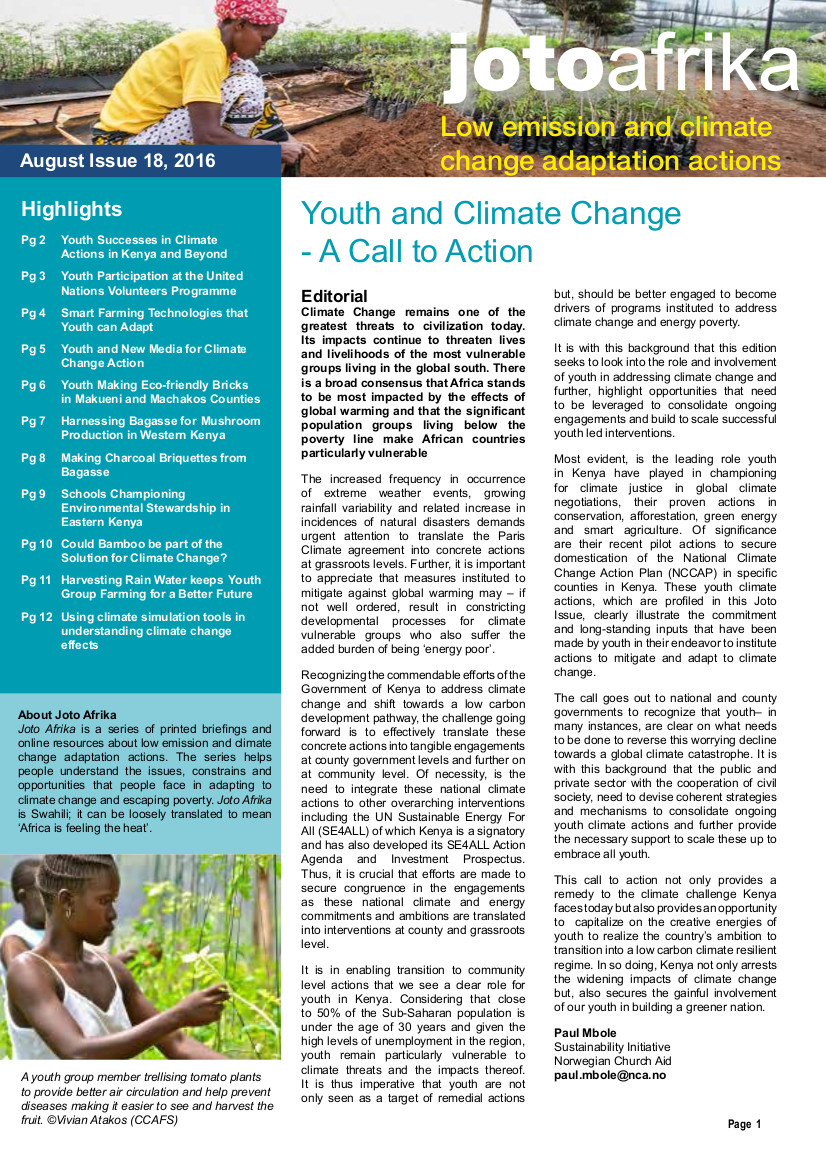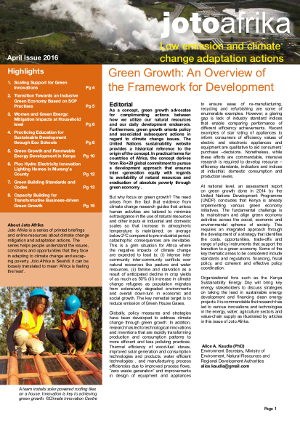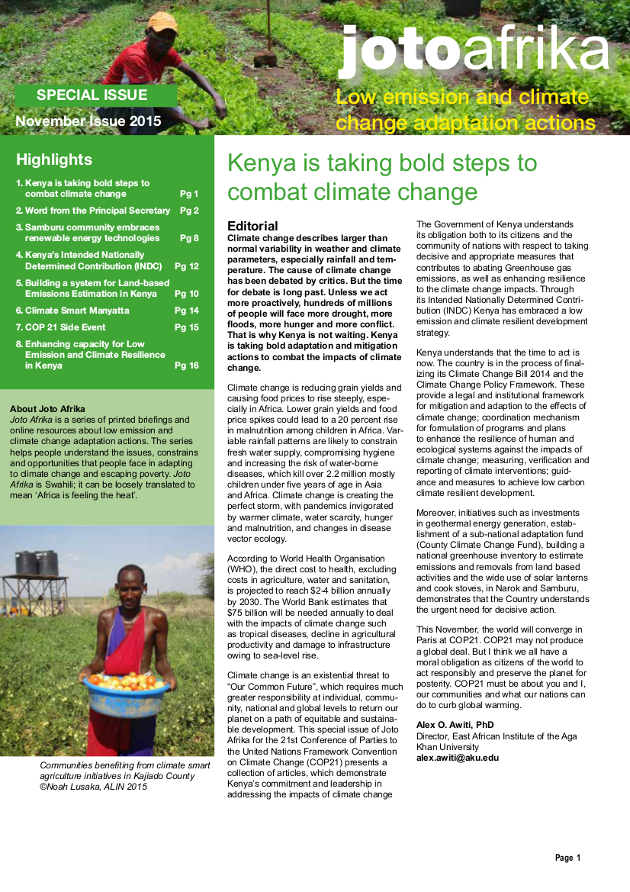Issue 24 - Climate Change: It is time for Action!
In October 2018, the Inter-Governmental Panel on Climate Change (IPCC) released a “Special Report on Global Warming of 1.5°C.” The report findings show that at the end of 2017, global temperatures had risen by about 1.0 degree Celsius compared to pre-industrial times; and the world is on track to exceed the 1.5°C warming between 2030 and 2052. A more pronounced warming is expected in Africa, exceeding the global warming levels over most of the continent.
Kenya’s Greenhouse Gas (GHG) emissions represent less than 1 percent of total global emissions; yet its economy is heavily dependent on climate-sensitive sectors such as agriculture, water, energy, tourism, wildlife, and health.
This Joto Afrika issue highlights Kenya’s approach to ensuring low carbon climate resilient development at all levels, by National and County Governments and other Non-State Actors.
As Kenya continues to take action in various sectors, and present our position at COP 24 at Katowice, Poland, it is our sincere hope that all Parties, particularly the “big emitters” have listened to the alarm raised by the “Special Report on Global Warming of 1.5°C.” We are all sailing in one boat, we either take action now, or be the generation that sunk the Titanic!

